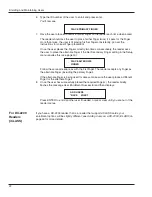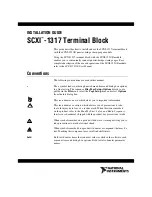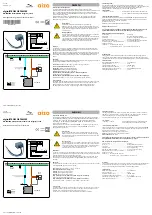
HandKey II Manual
11
For each type of connection that you need, connect the corresponding wiring to the
appropriate pins on the terminal connector block.
Table 3-1: Terminal Block Connections
Terminal Connection
Notes
1
Card Reader: Wiegand D0 or
Magnetic Stripe Data Input
Use these terminals to connect to an
external card reader to supply user IDs
instead of having users enter their IDs
using the reader keypad.
(These terminals aren’t needed if your
reader has a built-in card-reader.)
2
Card Reader: Wiegand D1 or
Magstripe Clock Input
3
Access Control Panel: Wiegand D0,
Magstripe Data Output, or some
other type through RS-485 wiring
Use these terminals to connect to an
access control panel.
4
Ground
5
Access Control Panel: Wiegand D1,
Magstripe clock output
6
Tamper switch output
Use this terminal to connect to a
tamper alarm. A signal goes through
this connection if the reader is tipped,
indicating that someone may be
tampering with the reader.
7
External bell input
These terminals let you connect output
wires from your access control panel
so your access control panel can
control the bell (beeper) and red/green/
amber LED’s on the reader. For input
here to make a difference, the Beeper/
LED settings on the Setup menu must
be set to respond to external input; see
page 41.
8
LED red input
9
LED green input
10
Reader/host network Tx: RS-485
wiring or RS-232 wiring
Use these terminals to network with
other FingerKey readers through either
RS-485 wiring or RS-232 wiring. (RS-
232 is only used to connect a single
reader to a host computer; usually you
will use RS-485.)
11
Ground
12
Reader/host network Rx: RS-485
wiring or RS-232 wiring
Connecting the
Reader to the
Access Control
Panel, to an
External Card
Reader, and to
Other Readers
















































